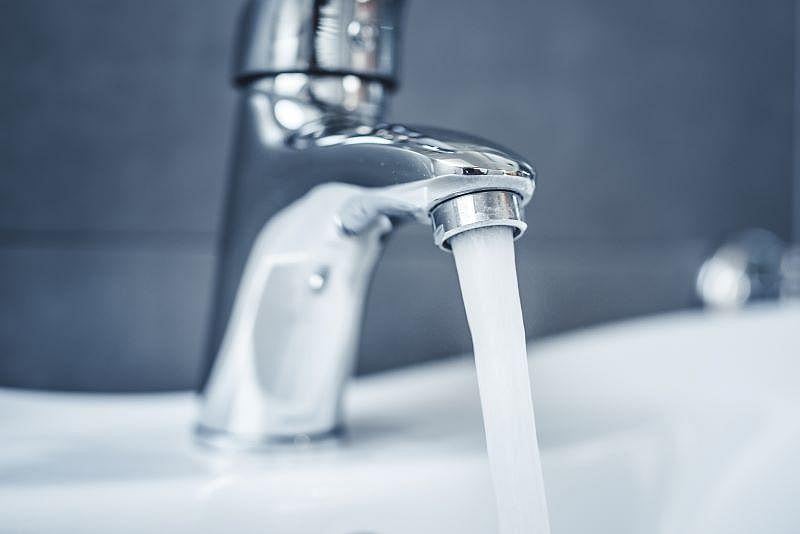Manténgase sano!

- Cara Murez
- Posted March 8, 2023
Is Your Tap Water Too Hot? Scalding Burns Send Thousands to ER Each Year
A water heater set to 120 degrees Fahrenheit can release water from the tap hot enough to cause a second-degree burn in about nine minutes.
Turned up to 130 degrees, that injury happens in just 25 seconds. At 140 degrees, it only takes three seconds, according to a new study that tallied the personal and financial costs of scalding injuries in the United States.
Researchers led by Wendy Shields, a senior scientist from Johns Hopkins Bloomberg School of Public Health in Baltimore, recommend a potential solution to help prevent these serious accidents. Mandating thermostatic mixing valves that add cold water to tap water before it comes out of the faucet could make a difference, they said.
"Scald burns are actually something that's fairly common that we will see in the emergency department and it is often smaller children that are injured,"said Dr. Torree McGowan, a spokesperson for the American College of Emergency Physicians and an ER doctor for St. Charles Health System in Redmond, Ore.
"When we do see scald burns from the tap, it is usually because our water heaters are turned up too high and we underestimate how much of a difference 10 degrees in the heat of our hot water heater can make,"said McGowan, who was not involved in the research.
To study the issue, scientists used data from two U.S. databases, the National Inpatient Sample (NIS) and the Nationwide Emergency Department Sample (NEDS) from the Healthcare Cost and Utilization Project (HCUP) for the years 2016 to 2018.
That gave the research team more than 52,000 emergency department visits, 7,270 hospital admissions and 110 hospital deaths that were attributed to scald burns.
About 45% of patients in the NIS data were ages 18 to 64. About 41% were white. About 57.5% were men and boys.
The NEDS data included 60% of patients who were 18 to 64, with 57% of the whole group female.
Dr. Michael Cooper, director of the burn center at Staten Island University Hospital in New York City, said he also commonly sees scalding injuries in pediatric patients. Cooper was not involved in this study.
These injuries can happen in seconds when an infant or toddler accidentally moves the lever for the faucet, turning the water too hot.
It can also happen when an older relative is staying with family and misunderstands the faucet controls.
"They, by mistake, will turn the hot water on thinking they're turning the cold water on,"Cooper said.
A third group that Cooper commonly sees are diabetics who have decreased sensation in their feet. They may soak their feet in hot tap water, getting second- or third-degree burns because of the extended time of exposure.
Someone filling a sink with water to do dishes might reach a hand in and find a scalding temperature, McGowan added.
"Again, we're talking about three seconds worth of time. It doesn't take much,"McGowan said.
The study data revealed that the average expense for each initial emergency visit was $572, while the cost of a hospital stay was more than $28,000. Together this adds up to $78.8 million in the United States annually.
That's before even tallying the cost of rehab, medications or infection treatment.
Too-hot tap water is responsible for about 25% of all scald burns in the United States, according to the study. About 35.4% of inpatient treatment cases and 16% of emergency department visits involved several body surfaces.
In a second-degree burn, the skin starts to blister, McGowan explained.
"Those burns will hurt for several weeks. Those blisters usually will pop and you have an open wound that has to be cared for,"McGowan said. "Third-degree burns or full thickness burns destroy the entire top layer of the skin and those often will require skin grafting."
Most scald burns that Cooper sees are second-degree, which heal in about two weeks without a lot of scarring.
"It could be very painful, obviously, during the time that it's healing, but usually those burns will heal,"Cooper said.
Deaths are, of course, are more rare.
The risk of death rises with the size of the burn. It can also increase with extremes of age, Cooper said. Having preexisting health issues, such as kidney, heart or lung disease, also increase the risk of death.
McGowan noted that the majority of deaths found in the study were elderly patients.
"We think about protecting our kids. We also forget that our elderly can be at a big risk from this, too,"McGowan said.
The study notes that manufacturers voluntarily adopted at 120-degree F preset temperature standard recommended by the U.S. Consumer Product Safety Commission in 1988.
Cooper goes one step further and recommends setting the water heater at 110 degrees.
He counsels parents to be very careful when bathing children in sinks with easily moved faucets. They should watch that the lever isn't accidentally kicked or moved, and to never turn their back for even a second.
"That's when it happens. These injuries happen very quickly,"Cooper said.
McGowan noted that the best treatment for any type of burn is immediately running it under cold water, not ice, for 20 minutes. This can decrease the amount of burn and risk of hospitalization by about 30% to 40%, she said.
The authors noted that the retail cost of a thermostatic mixing valve is only $30 and would add about $100 to the cost of installing a water heater.
The findings were published March 7 in the journal Injury Prevention.
More information
The U.S. Consumer Product Safety Commission has more on preventing tap water scalding injuries.
SOURCES: Torree McGowan, MD, spokesperson, American College of Emergency Physicians and emergency physician, St. Charles Health System, Redmond, Ore.; Michael Cooper, MD, director, burn center, Staten Island University Hospital, and assistant professor, Donald and Barbara Zucker School of Medicine at Hofstra/Northwell, Hempstead, N.Y.; Injury Prevention, March 7, 2023





